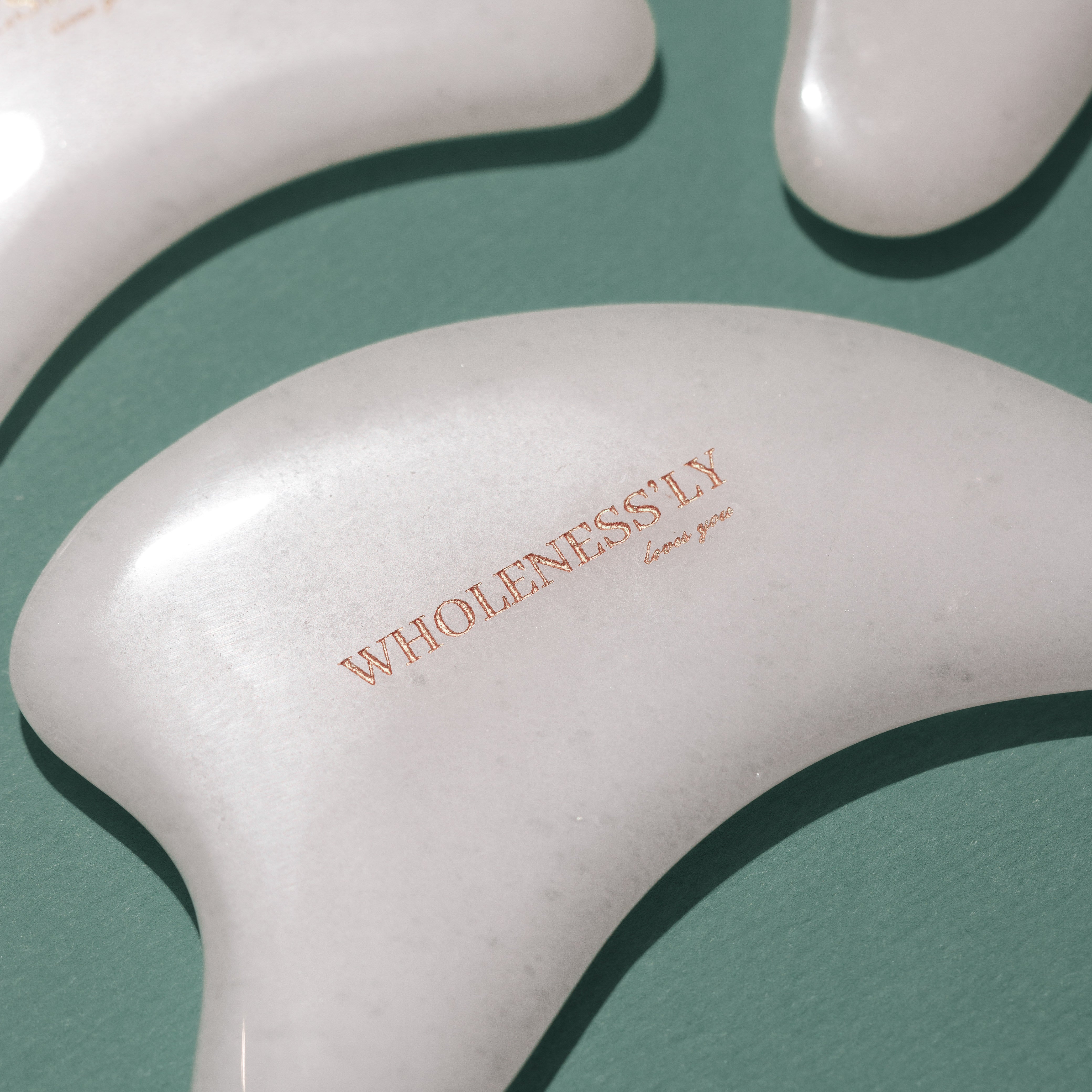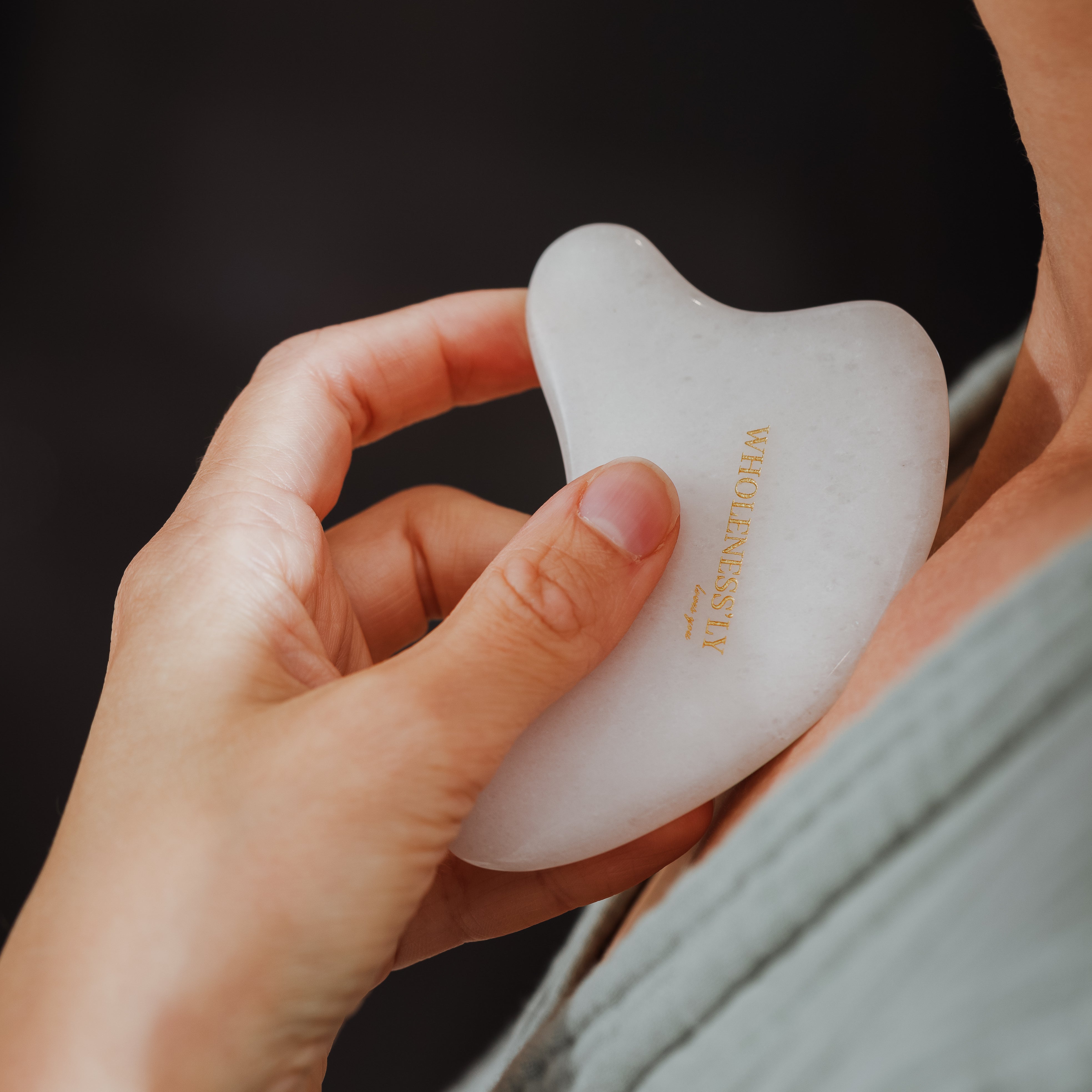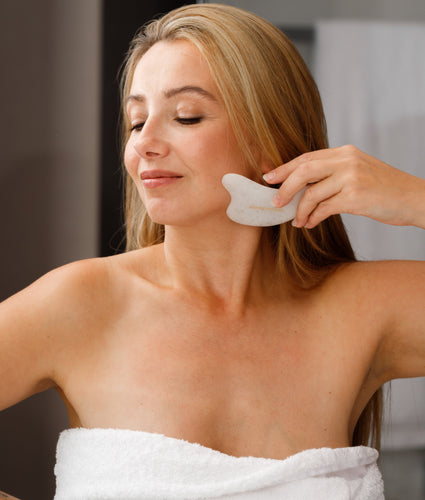
The Hidden Origins of Gua Sha: From Ancient Healing to Modern Skincare
Social media influencers love showing off their rose quartz gua sha tools as the newest must-have skincare item. This trending beauty practice has a fascinating backstory that dates back thousands of years before Instagram tutorials and modern skincare routines existed.
Traditional gua sha started as a therapeutic healing technique in East Asian medicine. The story of gua sha reveals how this ancient practice evolved from a healing treatment to today's beloved beauty ritual. Let me share its remarkable story that spans centuries, cultures, and continents. A traditional healing method that became one of today's most popular skincare techniques.
The Ancient Roots of Gua Sha Practice
The story of gua sha takes us back to the Paleolithic Age. This ancient healing technique has grown substantially over time and shaped traditional medicine throughout East Asia.
Historical records first mention gua sha during China's Ming Dynasty (1368-1644), though people practiced it long before then. The original practitioners used several tools to treat various conditions:
- Pointed stones and animal bones
- Buffalo horns with skin lubricants
- Copper coins and household materials
The sort of thing I love about gua sha is its many therapeutic uses in ancient times. On top of that, field workers used it to recover from heatstroke because the scraping action brought blood to the surface and cooled their bodies. Traditional healers applied this technique to treat inflammation and pathogens, and they even helped patients recover from conditions as severe as coma.
Gua sha's techniques grew more refined during the Qing Dynasty. Practitioners developed precise methods and started treating more than just the limbs. So they created a complete system that included treatments for headaches, facial numbness, and many other conditions.
Gua sha's name tells its own story - it means "scraping away illness". Practitioners believed this technique could boost blood circulation and release stagnant energy, known as "qi" in traditional Chinese medicine.
Sha, which describes the distinctive redness during treatment, was seen as a sign of releasing stagnant blood. This belief is the foundation of gua sha's therapeutic approach that still influences its modern practice.
Cultural Significance Across Asian Traditions
My research into traditional gua sha shows its amazing roots in Asian cultures of all types, and each culture adds its own spin to this ancient practice. The technique goes by different names depending on where you look:
In Vietnam, it's known as Cạo Gió ("to scrape wind")
In Indonesia, practitioners call it Kerikan ("scraping technique")
In Cambodia, it's referred to as kaos khyal
The sort of thing I love is how each culture used tools they could easily find around them. Vietnamese and Cambodian healers especially liked smooth-edged coins, while Chinese families often used ceramic dishes or soup spoons.
This practice means more than just the tools people used. Traditional healers picked their materials based on what they believed were special powers. To name just one example, buffalo horn was seen as highly yang, jade meant long life, and copper was thought to work well with blood.
All the same, this rich cultural heritage faces some tough challenges today. This becomes clear especially when you have Western misunderstandings, where gua sha's telltale marks have been mistaken for signs of abuse. These cultural mix-ups show why we need to understand these traditional practices in their proper setting.
Many Asian countries keep the authentic practice alive today. Chinese hospitals and private practitioners still offer gua sha treatments, which shows how much local communities trust this traditional healing method.
The Journey from Medicine to Modern Beauty
The sort of thing I love is how gua sha accidentally evolved from a healing method into a popular beauty treatment. Acupuncturists first found that there was an unexpected improvement in their patients' skin while treating other conditions.Research later confirmed these observations. Studies revealed blood circulation increased by 400% and lasted for 7.5 minutes after a gua sha treatment.
This improved blood flow leads to several beauty benefits:
- Better product absorption
- Less facial puffiness
- Smoother skin texture
- More defined facial contours
- Reduced muscle tension
The most important change happened when spa professionals adapted traditional methods for modern skincare. They found that there was a way to drain lymphatic fluid and reduce inflammation using gentle, upward strokes with jade or rose quartz tools.
Gua sha now exists in two modern forms. Spa treatments provide customized sessions with trained experts. Home treatments have become popular because they're convenient and affordable. People who use gua sha 3-4 times weekly for 3-5 minutes can see visible results.
Scientists keep learning about gua sha's benefits. Research shows it works well for improving microcirculation and lymphatic drainage. This ancient healing technique has become part of today's beauty routines, supported by both traditional knowledge and scientific research.
Conclusion
Gua sha's amazing trip from ancient healing practice to modern beauty ritual shows how traditional wisdom adapts to today's needs. My research shows how this technique has managed to keep its core principles and found new ways to help with skincare.
Modern science backs up what healers knew hundreds of years ago - this method really works. Treatment improves blood flow by a lot, defines facial features better, and makes skin healthier. Modern beauty fans might pick rose quartz over buffalo horn, but the basic technique stays close to its ancient roots.
We should recognize how Asian cultures preserved this valuable practice. Their detailed records and continued use of gua sha created a bridge between ancient healing and modern skincare. This isn't just another beauty trend - it's proof of traditional medicine's lasting wisdom.
Gua sha will keep growing while staying true to its rich heritage. This practice has already shown it can exceed time, cultures, and purposes. It brings benefits to both wellness and beauty worlds.


